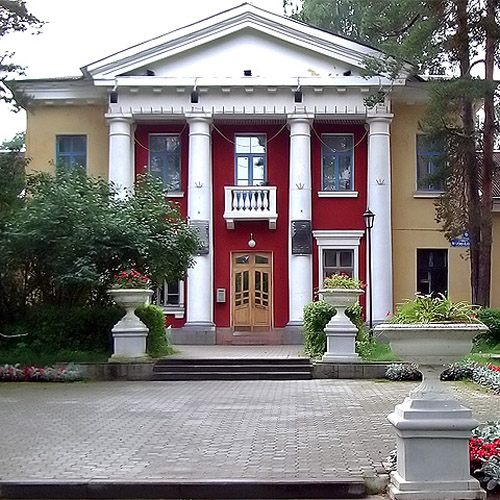Moskovium
115
Mc
Groep
15
Periode
7
Blok
p
Protrone
Elektrone
Neutrone
115
115
173
Algemene Eienskappe
Atoom Nommer
115
Atoommassa
[288]
Massa Nommer
288
Kategorie
Hoofgroepmetale
Kleur
n/a
Radioaktief
Ja
Named after Moscow Oblast where Dubna is located
Kristalstruktuur
n/a
Geskiendenis
Moscovium was identified in 2004 by a team composed of Russian scientists at the Joint Institute for Nuclear Research in Dubna, and American scientists at the Lawrence Livermore National Laboratory.
The team reported that they bombarded americium-243 with calcium-48 ions to produce four atoms of moscovium.
These atoms decayed by emission of alpha-particles to nihonium in approximately 100 milliseconds.
The team reported that they bombarded americium-243 with calcium-48 ions to produce four atoms of moscovium.
These atoms decayed by emission of alpha-particles to nihonium in approximately 100 milliseconds.
Elektrone per skil
2, 8, 18, 32, 32, 18, 5
Elektronkonfigurasie
[Rn] 5f14 6d10 7s2 7p3
Moscovium is historically known as eka-bismuth
Fisiese Eienskappe
Fase
Soliede
Digtheid
-
Smeltpunt
-
Kookpunt
-
Heat of Fusion
n/a
Heat of Vaporization
n/a
Spesifieke Hitte Kapasiteit
-
Oorvloed in die aardkors
n/a
Oorvloed in die heelal
n/a

Beeld Krediete: Wikimedia Commons (Hrustov)
The element was discovered at the Joint Institute for Nuclear Research in Dubna, Russia
CAS Nommer
54085-64-2
PubChem CID Nommer
n/a
Atomiese Eienskappe
Atoom radius
-
Kovalente Radius
162 pm
Elektronegatiewiteit
-
Ionisasie potensiaal
-
Atoom volume
-
Termiese geleidingsvermoë
-
Oksidasiestate
1, 3
Toepassings
Moscovium is used for scientific research purposes only.
Moscovium is harmful due to its radioactivity
Isotope
Stabiele Isotope
-Onstabiele Isotope
287Mc, 288Mc, 289Mc, 290Mc, 291Mc